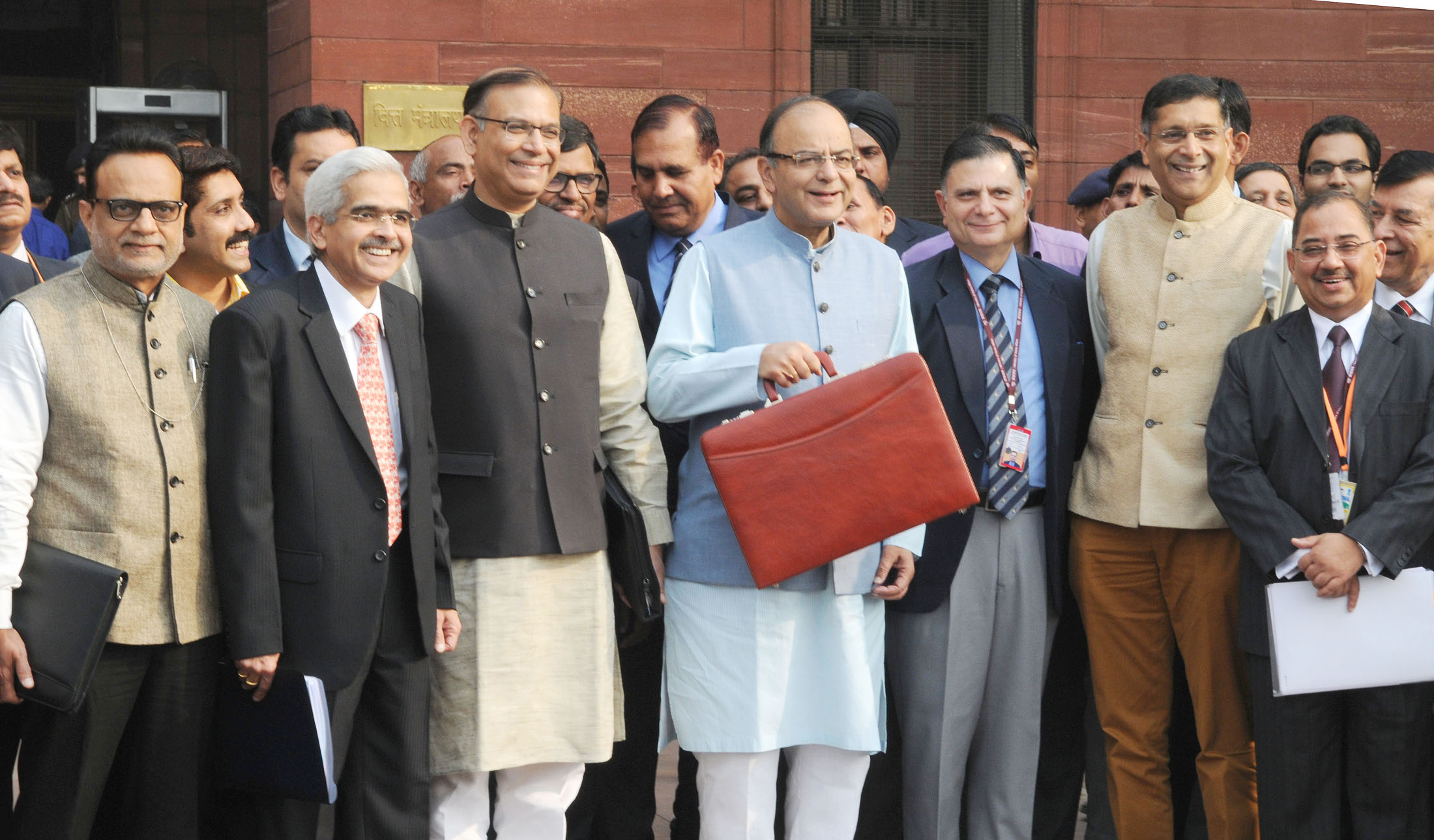Indian Budget 2016
Biz@India

The Union Minister for Finance, Corporate Affairs and Information & Broadcasting, Shri Arun Jaitley departs from North Block to Parliament House along with the Minister of State for Finance, Shri Jayant Sinha to present the General Budget 2016-17, in New Delhi on February 29, 2016.
The Secretary, Department of Economic Affairs, Ministry of Finance, Shri Shaktikanta Das, the Secretary, Revenue, Dr. Hasmukh Adhia and the Chief Economic Adviser, Dr. Arvind Subramanian are also seen.
The 2016 Indian Budget, presented on Monday by Finance Minister Arun Jaitley, is first focused on a rural economy that still needs some boosting. It aims also at further reforms to accelerate investments, while keeping the public deficit at 3.5% of the Gross Domestic Product. And to attract more foreign investments in an economy accelerating towards a 7.5% growth but facing a sluggish world environment.
A budget is always a delicate balance, economically and politically. In his second full budget, since the BJP led government took helm in 2014, Finance Minister Arun Jaitley tried to stay focused on three priorities, during his speech of presentation of the 2016 budget before the Lok Sabha, the lower chamber of the Indian Parliament: farmers, investments and reinforcing India’s attractiveness in a delicate international economic context.
First, he presented a set of measures to boost a rural economy which is a job provider for half of Indian population but which still needs a boost. Among them, a health cover of up to INR 1 lakh per family was announced, as well as measures to promote an irrigation scheme for 28.5 lakh hectares and affordable housing. A new scheme aims also at granting tenant farmers better access to bank loans and make them less dependent on money landers that offer prohibitive rates.
The focus was on social spending at large, with an INR 2000-crore fund to provide LPG Connection to women part of underprivileged households. That would concern 1.5 crore households below poverty line in 2016.
The whole idea is that a growth acceleration can only occur if poorer households, and particularly rural ones, do get more spending capacities, in a context of persisting droughts and tight financial conditions for farmers. It is also a direct answer to opposition critics, such as the Congress Party, that consider the government too much focused on industry.
But at the same time, the budget tries to address a second priority and a second source of concern identified by economists and analysts, such as credit rating agency Moody’s in its last world report: the need for more investment in the economy.
From the public side, in the infrastructure sector, INR 97,000 crore will be for instance devoted to building roads and highways. The railway budget, presented as always separately last week, did also put the emphasis on increased investments.
Big FDI increase
The third priority is to protect India against international economy headwinds, making it a soft spot for international investors, while neighbours like China slow down and while the US, Europe and Japan remain fragile.
The trend is good. Foreign Direct Investments (FDI) into India increased by 40% to 29.44 billion dollars in April-December 2015, on a yearly basis.
But the government wants it to be sustained. It will allow 100% foreign investment, against 51% previously, in processed food retailing, if the products are manufactured in India. A move that was highly expected by international multi-brand retailing giants such as Walmart, to be able to open food retail shops in India.
In the insurance and pension sectors, foreign investment up to 49% will be allowed through the automatic route. Investors won’t need to ask anymore the Foreign Investment Promotion Board (FIPB) permission to increase their share, which was a reason why last year’s greater open up to foreign partners did produce moderate results in these sectors.
Also, symbolically, Jaitley announced foreign investors would be allowed to own up to 15% stake in domestic stock exchanges (the previous limit was 5%), to increase their attractiveness and competitiveness.
The Finance Minister also assured there will be a cautious use of the retrospective tax law that does affect for instance British telecom group Vodafone.
The overall goal is to meet the Gross Domestic Product (GDP) growth target of 7-7.75% in this fiscal year and to keep at the same time the fiscal deficit at 3.5 % of GDP. That is why for instance Jaitley also decided some measures to tighten the purse strings: such as a 0.5% cess on services that will raise in practice the service tax to 15% and increase the prices of most services.
The idea was to have a balanced budget in many ways: in terms of keeping the deficit under check; in terms of priorities, between rural and investment spending; and between domestic and international concerns. The key lies now in its implementation throughout the fiscal year.









